Custard Vs Pudding: What Sets The 2 Sweet Desserts Apart?
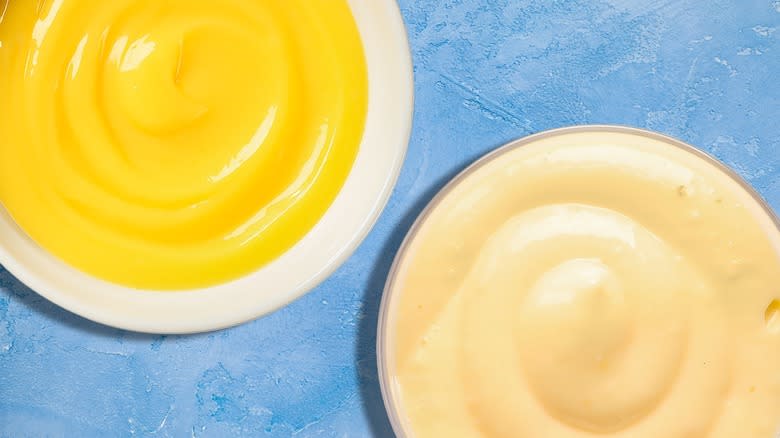
When it comes to dessert, few things are as comforting and indulgent as custard and pudding. These creamy delights have been satisfying sweet tooths for centuries, each with its own distinct characteristics and origins. Let's delve into the world of custard and pudding to discover what sets them apart and why they've both become beloved classics.
While custard and pudding share creamy textures and decadent flavors, there are several key differences that set them apart. These include their ingredients, texture, and even how the two desserts are prepared. Custard primarily relies on eggs and dairy, while pudding uses milk or cream, sugar, and a starch thickener like cornstarch or tapioca. Custard tends to be smoother and more velvety due to the egg content, whereas pudding has a thicker, more gelatinous consistency because of the added starch. While all of these characteristics differentiate the two, it's helpful to know more about how each of these desserts developed.
Read more: 30 Types Of Cake, Explained
What Is Custard?

Custard is a timeless treat known for its rich, velvety texture and captivating flavor. It's a versatile dessert, equally adored when served warm or chilled. But, what exactly is custard, and where did it come from? At its core, custard is a culinary creation born from the harmonious union of eggs and dairy, most commonly milk and cream. The magic happens when these ingredients are combined and gently heated. As the mixture warms, the proteins in the eggs coagulate, creating that signature thick, luscious texture. Sweeteners like sugar and flavorings such as vanilla can be added to customize the taste.
Custard has an illustrious history that spans across the globe. Its origins can be traced back to ancient Roman kitchens, where it was a popular dessert made with a mixture of milk, honey, and eggs. Over time, custard recipes evolved and variations emerged in different cuisines. One notable custard descendant is the French crème brûlée, which features a creamy custard base topped with a caramelized sugar crust. In England, custard became a quintessential accompaniment to desserts like apple pie.
What Is Pudding?
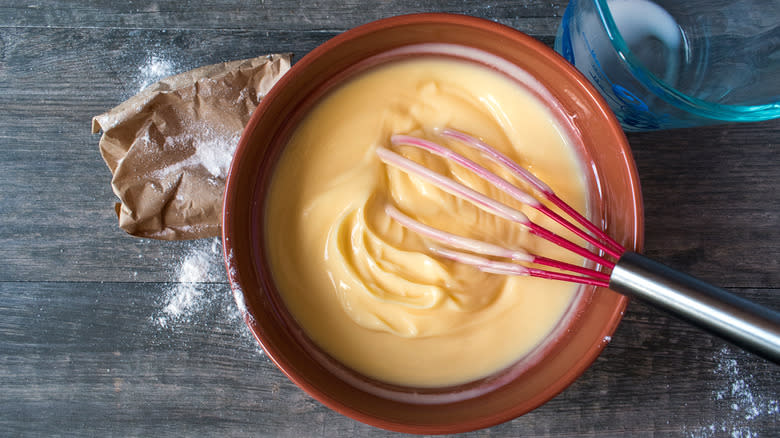
Pudding, on the other hand, is a dessert term that can spark confusion due to its varied meanings in different regions. In the United States, pudding generally refers to a creamy dessert made from milk, sugar, and starch, often flavored with chocolate or vanilla. In the United Kingdom, "pudding" is used broadly to describe desserts in general and can even refer to specific dishes like Yorkshire pudding or black pudding.
The origins of pudding are multifaceted and date back centuries. In medieval Europe, "pudding" encompassed a wide range of dishes that featured meat, fruits, and spices. These early puddings were often encased in animal intestines or stomachs and boiled or steamed. Over time, puddings evolved into sweeter, starch-based desserts while retaining the name "pudding." One well-known English dessert that bears the name is "bread pudding," where stale bread is soaked in a milk and egg mixture, flavored with spices, and baked to perfection. In the U.S., rice pudding is a beloved classic that combines rice, milk, sugar, and aromatic spices.
Pudding Relies On Starch
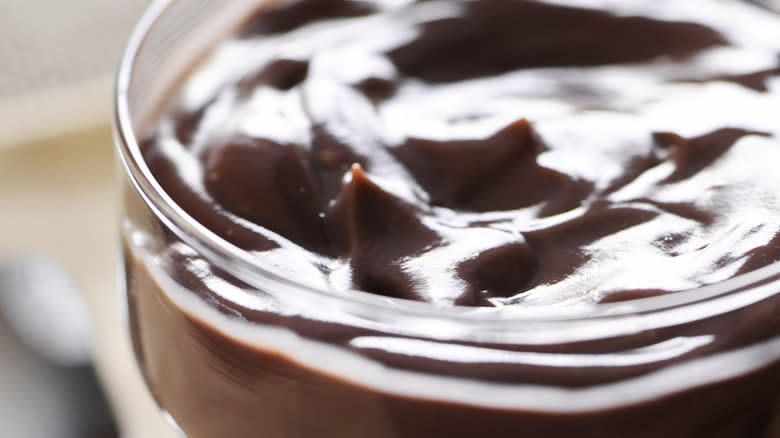
Though both creamy delights, custard and pudding diverge when it comes to their core ingredients. Custard relies on eggs to create its rich texture. The eggs coalesce with the other ingredients through gentle heating, giving custard its silky consistency. Pudding, on the other hand, utilizes starch, such as cornstarch or flour, as its primary thickening agent. This starch serves to thicken the mixture, resulting in a more gelatinous texture compared to custard. Pudding's distinct characteristics emerge from this unique combination of ingredients.
Both custard and pudding, however, offer endless possibilities for enhancement. Additional ingredients, such as chocolate, spices, extracts, or fruits, can be introduced to create a wide array of flavor profiles, making them versatile canvases for culinary creativity and indulgence. Whether you prefer the elegance of custard or the comforting embrace of pudding, these desserts offer a world of taste experiences waiting to be explored.
Custard Has A Firmer, Fattier Texture
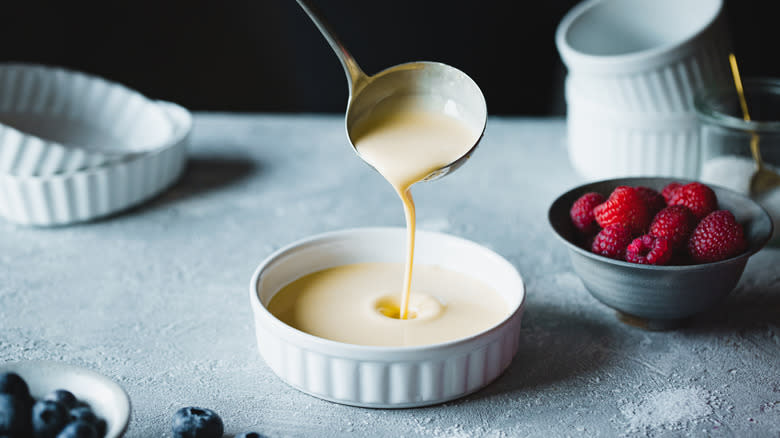
The distinct textures of custard and pudding are most vividly showcased in a variety of desserts. With its silkier yet firmer consistency, custard shines in classics like crème brûlée. On the other hand, bread pudding demonstrates the range of textures that pudding can encompass. It features a soft, creamy interior created by soaking chunks of bread in a pudding mixture, resulting in a comforting and spoonable dessert.
For those seeking the silky allure of custard, flan is a prime example, boasting an irresistibly smooth caramelized custard that gracefully quivers with each delicate spoonful. In contrast, rice pudding is a quintessential pudding dessert, delivering a thicker, more gelatinous texture courtesy of the added starchy rice, creating a cozy and comforting treat. Custard can also be frozen for a sweet, ice cream-like treat that showcases the indulgent amount of fat in the dessert. Similarly, pudding makes for a delicious layer in icebox pies, adding a soft contrast to the other layers, which range from cookies to nuts. Whether you savor the slight resistance of baked custard or the softness of pudding, both desserts offer a delightful contrast in textures to please the palate.
Pudding Is Easier To Make
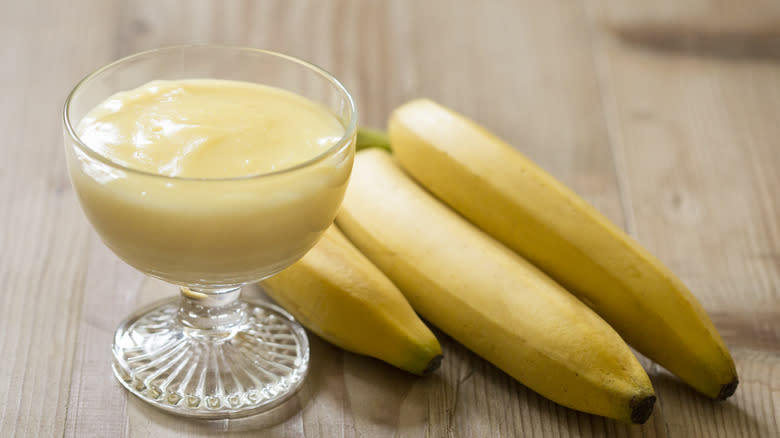
The preparation of custard and pudding involves distinct techniques, with custard often considered the trickier of the two. Custard requires careful attention to detail and precision due to its sensitivity to temperature. Overcooking or overheating can result in curdling the eggs or a lumpy consistency, making custard a culinary challenge that demands finesse.
On the other hand, pudding is notably easier to prepare, making it a favorite choice for home cooks of all levels. By cooking the mixture until it thickens, pudding obtains its characteristic texture without the need for precise temperature control or the risk of curdling. And, some pudding mixes don't require cooking at all.
While custard may be considered a culinary achievement due to its delicacy, pudding offers a user-friendly dessert option that is accessible to even novice cooks. Whether you opt for the elegance of custard or the ease of pudding, both desserts have a place in the hearts of dessert lovers worldwide.
Read the original article on Tasting Table.

